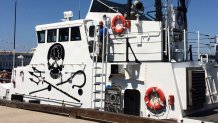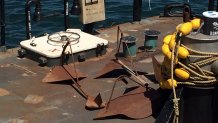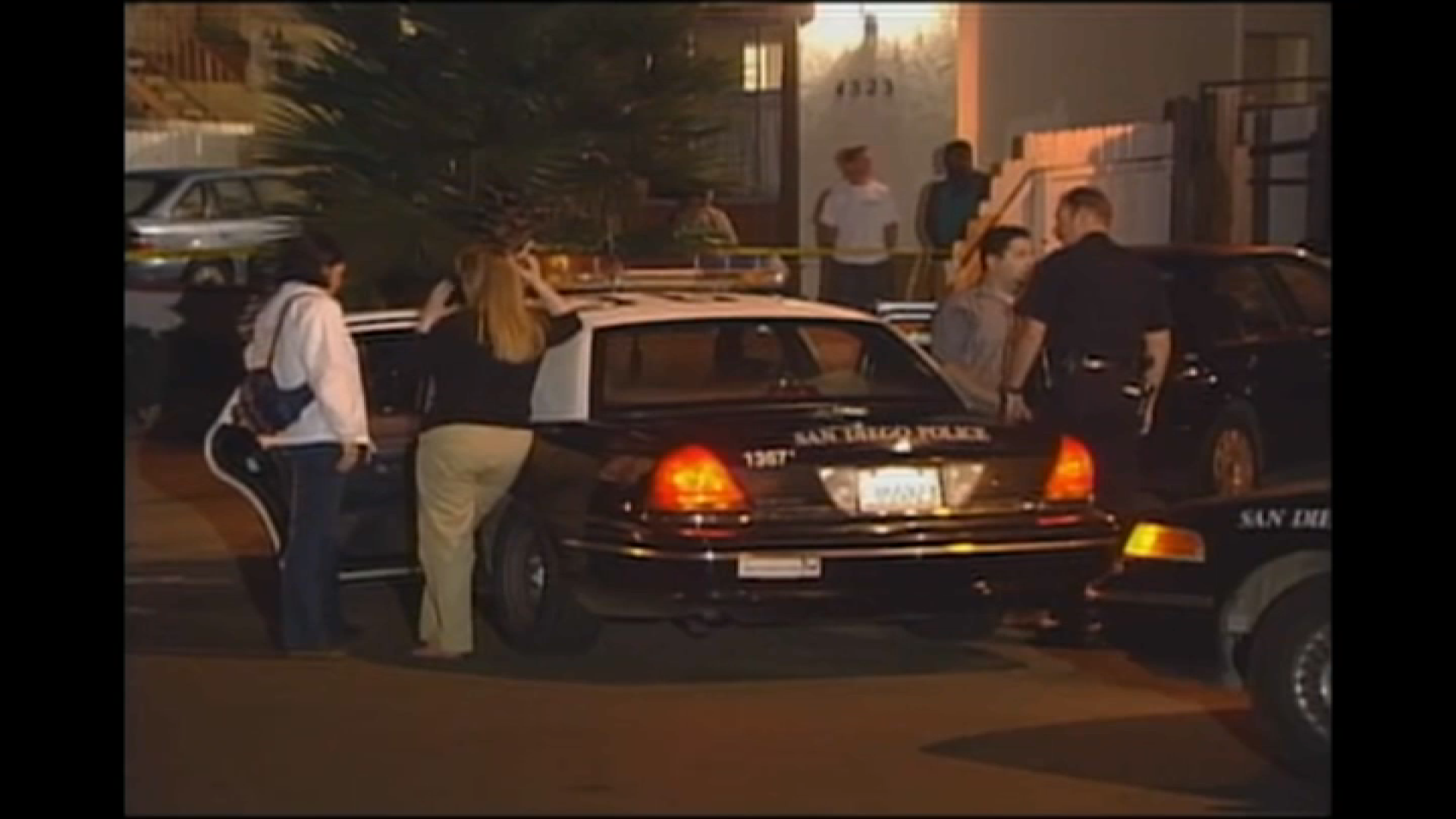Parked along the Embarcadero near the Star of India, is a ship that just spent the last six months patrolling the vaquita refuge in the northern areas of the Sea of Cortez, also called the Gulf of California.
It's in San Diego only briefly; it soon will be returning to the sea to continue its effort save a dying species--the vaquita, a small porpoise with limited prospects these days.
"We have to realize that extinction is forever. There is no way back," said Captain Oona Layolle.
Layolle is motivated, as is her crew, to save the species as well as combat smugglers. She and her crew want to end the killing of the vaquita by removing illegal gill nets which trap it as well as other marine animals.
San Diego Assemblyman Todd Gloria is also motivated by the plight of vaquitas as well.
"It's the most endangered animal in the world. And it's slowly dying in numbers," Gloria said.
Gloria has proposed legislation that would have California ban certain fishing practices.
Local
"My bill would complement Mexican government efforts, which would ban gill nets and other harmful catching methods," he said.
Layolle is the captain of the Farley Mowat, named after a Canadian environmentalist. This former U.S. Coast Guard cutter is now part of the Sea Shepherd Conservation Society's fleet.
The Shephard's signage is clearly visible on the side of the vessel when you walk up to the 110-foot long ship along Harbor Drive. The bold pirate-like logo clearly signaling these environmentalists play for keeps on the seas. The ship is part of the Society's mission to "conserve and protect ecosystems and species."

The Farley Mowat's most recent patrol to recover illegal fishing gear included hauling in all sorts of nets with different purposes and of different sizes. Between the Mowat and its partner M/Y Sam Simon, they removed 233 nets and other illegal fishing gear.
Layolle held part of one net they had removed from the sea, telling NBC 7: "This net has a special story because it was entangled around a humpback whale and we managed to save that whale."
A YouTube video produced by the Sea Shepherd gives you a good idea how they were able to pull off this difficult job.
It's all part of their mission to save the endangered porpoise and rid the sea of illegal nets.
"Our job is to find the places were the illegal fisherman go to set those nets," Layolle said.
They pull the nets up with a simple but effective device. It looks part anchor, part snow shovel and when it's dragged behind the ship, it snags illegal nets.

"They are under the water," Layolle said, describing the nets. "There are no buoys and you can't see them. For that reason, we drag hooks behind our ships."
The irony here is the porpoises are not the target of the poachers who use the nets, it's the Totoaba Bass. The bass, also endangered, are in the same areas of the sea as the vaquita. The bladder of the Totoaba supposedly cures infertility and skin problems and helps improve circulation.
Chinese buyers drive the market--the bladders are worth about $10,000 a pound.
"It's been called the cocaine of the sea because it's more money for the cartels and it's an easier market," Layolle said.
The illegal nets have other casualties as well; dolphins, turtles, sea lions, and others. Trapped, not just by poachers, but ghost nets--abandoned nets that are still deadly.
On the most recent trip, the crews on both ships were able to free 795 live animals who had been trapped in the nets, which included sharks, dolphins, turtles, and sea lions.
The ship will soon be back in the water, zig-zagging across the Sea of Cortez because as Layolle said, the clock is ticking for the vaquita and other creatures.
"It's very important we continue to drag the sea so we can retrieve all of these traps, which still are killing animals," she said.
As well as tracking the poachers and smugglers after the Totoaba.The work to do this involves several high-tech gadgets that help in the tracking.
"We work with our radar to spot illegal activities. At night time we can see them on our radar and we launch drones that can watch the activity of the illegal fisherman," Layolle said.
The information is forwarded to the Mexican Navy who provide support as well as arrest the poachers.
Layolle told NBC 7 that the poaching activity seemed most active around the Isla Angel de la Guarda the last time the Farley Mowatt was in the Gulf.
Still, Layolle said she has found that not all fisherman are poachers and that they share many of the same goals as the Sea Shepherd Conservancy.
"A lot of them love the sea and want to have a future for their kids and they understand the sea and know that we have to protect and we have to respect the animals so they can survive," she said.



